Sandhya joins the lab as SNSF Ambizione Junior Group Leader
October 2024
Sandhya Manohar joins us from ETH to set up her research program on implications of cell size for mammalian genome homeostasis. Supported by the SNSF Ambizione Career Development Program, Sandhya will investigate how cells sense their own enlargement and how changes in cell size affect cell cycle commitment and genome integrity. More about Sandhya and her work can be found here.
Matthias presents at the German Society for Research on DNA Repair
September 2024
The Annual Meeting of the German Society for Research on DNA Repair (DGDR) took place in Cologne, Germany, from September 25th to September 27th. Organized by Stephanie Panier, Boris Pfander, and Björn Schuhmacher at the Max Planck Institute for Biology of Ageing. More information on the program and the society can be found here.
New publication on DSB repair in Nature Communications
August 2024
DNA double-strand breaks (DSBs) and interstrand crosslinks (ICLs) are amongst the most toxic DNA lesions. Research led by the van Attikum lab identified the Fanconi anemia (FA) core complex, which has known functions in ICL repair, as regulator of homologous recombination (HR) repair of DSBs independent of ICLs. Glad that we could help a bit with this exciting project. Read the full paper here.
New research grant from the Swiss Foundation to Combat Cancer
August 2024
Very grateful for research support by the Swiss Foundation to Combat Cancer (Stiftung zur Krebsbekämpfung). For the second time, we received research funding from the foundation and greatly appreciate their continuous support.
DMMD summer games to end the semester
July 2024
It has become a tradition to end the UZH spring semester with a playful team competition, the DMMD summer games, followed by a BBQ dinner with family and friends. Big thanks to all who helped organize this event.
EMBO Workshop in Leiden, Netherlands
June 2024
The 2024 EMBO Workshop on Chromatin Dynamics and Nuclear Organization in Genome Maintenance took place in beautiful Leiden, Netherlands. Organized at the unique Naturalis Biodiversity Center, the participants faced an exciting scientific program. Glad that we were part of it and already looking forward to the next edition.
RepliFate Advanced Microscopy Training in Munich, Germany
May 2024
Virginia participates at the Advanced Microscopy Training organized by our EU RepliFate doctoral network. Learn more about RepliFate, the participating research groups, the fellows, and the training and scientific networking activities here.
New SNSF project funding for the lab
April 2024
Successful grant application secures significant research funding for the lab. Very grateful to the SNSF for investing in researchers and new ideas. Third large research grant from the SNSF in a row. Equally grateful to the reviewers, who evaluated our work so positively.
Reducing blind spots
April 2024
As part of the UZH Leadership Program organized by the UZH Leadership and Governance Academy, we learned about reducing blind spots and how to make fairer, less biased decisions and evaluations. Learn more about the program here.
Practical block course on Cell Signaling
March 2024
Organized for the fourth time since 2021, the MNF block course BIO 245 on Cell Signaling got undergraduate students of Biology and Biomedicine into the lab for hands-on training and experiments. From the known and the expected to the unknown and unexpected.
EMBO Lab Leadership Course for Group Leaders
January 2024
Probably one of the best courses on lab leadership and leadership in general. Compact and intense, but super insightful and helpful. More on the course and the program as well as on related EMBO courses here.
Looking back at the year
December 2023
During our group end-of-the-year event, strolling around Zurich and its cozy Christmas markets, we looked back at the achievements of the year and the ups and downs that got us there, but also to the future and to what the next year may bring for our group and our research. Fun evening out with a great group of people.
Wrapping up lectures
November 2023
Second cycle of our new lecture series on Cell and Molecular Biology for undergrad students is coming to an end. From A like actin to Z like zinc finger protein we provide a comprehensive overview of prokaryotic and eukaryotic cells and discuss everything that is going on in these fascinating basic units of life.
RepliFate Meeting in Baeza, Spain
October 2023
The beautiful city of Baeza served as the backdrop for the first RepliFate annual meeting, a two-day event combining MSCA ITN introductions, research presentations, and PhD training. The meeting was a blend of science and networking, providing an excellent platform for knowledge exchange among the PhD fellows.
DMMD Retreat
September 2023
We spent three stimulating days in the mountains overlooking the beautiful Ägerisee for our biennial institute retreat. Scientific brainstorming, nice food, fun games, and, most importantly, a great group of people sharing a passion for science and research.
UZH Scientifica 2023
September 2023
Under the motto “What holds the world together” several thousand visitors experienced science up close at Switzerland’s largest science festival. View impressions here.
New review: “Genome maintenance meets mechanobiology”
August 2023
Our latest review is online as part of a collection on maintenance of genome integrity under physical constraints. Topics covered by our comprehensive article include cell cycle regulation & DNA replication, replication stress & chromosome fragility, telomere maintenance & ALT, emerging links between repair condensates and the nuclear cytoskeleton. Have a look at our review and the other articles of the collection here.
New publications in Nature Communications and Modern Pathology
July 2023
Research from the Baubec lab characterized MBD2 isoforms and their distinct roles in the context of NuRD function during cellular differentiation. Glad that we could help a bit with this exciting project. Read the full paper here. Moreover, our study on a PARP1, ADP-Ribosylation and TRIP12 triad in human breast cancer was published in Modern Pathology. Read the full paper here.
Lab retreat and Virginia joins as new PhD student
June 2023
This year’s lab retreat took place in the UNESCO Biosphere Reserve Entlebuch, located in central Switzerland. Surrounded by the fantastic flora and fauna of this region, discussing biology was so much more fun. Great start also for Virginia, who is back after her MSc project in our lab to now start her PhD as part of the RepliFate international training network.
RPA dynamics at telomeres
May 2023
Our recent article in NSMB was selected as Research Highlight by Nature Reviews Molecular Cell Biology. Great summary of our findings by Nature Reviews MCB Senior Editor Eytan Zlotorynski. Check it out here.
Vincent’s RPA manuscript online
March 2023
Vincent’s findings on the essential single-stranded DNA binding protein RPA and its dynamic assembly into nuclear condensates at telomeres is now online at NSMB. Read the full story here.
Keystone Meeting on Genomic Instability and DNA Repair
March 2023
Fantastic science and a fantastic scenery, the Keystone Conference on Genomic Instability and DNA Repair in Whistler, BC, Canada, organized by Katharina Schlacher, Irene Chiolo and Ralph Scully as a joint meeting with the Keystone Conference on Precision Genome Engineering.
Keystone Meeting on Biomolecular Condensates
February 2023
Organized by Ibrahim Cissé, Jackie Vogel and Rohit V. Pappu, the Keystone Conference on Biomolecular Condensates: Emerging Cellular and Biophysical Roles in Vancouver, BC, Canada, brought together the Who’s Who of condensate research. Thought-provoking concepts at the intersection of biology and physics.
Molecular Life Sciences PhD Interviews
January 2023
The Life Science Zurich Graduate School (LSZGS) concluded its most recent selection round for the Molecular Life Sciences (MLS) PhD Program, recruiting the next generation of PhD students to UZH & ETHZ. Glad that Virginia Pasti was accepted to the program and will join us soon.
RepliFate Kickoff Meeting in Madrid
November 2022
The new EU RepliFate international training network was brought to life at the official kickoff meeting at the CBMSO in Madrid, Spain. Great fun to share research and training ideas. For more information about the symposium and the participating scientists, click here.
PARP1 proximity proteomics published in NAR
November 2022
Research from the Beli lab at the IMB mapped proteins in vicinity of PARP1 and stressed replication forks and identified the protein TPX2 as regulator of PARP1 activity and PARP inhibitor sensitivity. Glad that we could help a bit with this exciting project. Read the full paper here.
New lecture series on Cell and Molecular Biology
October 2022
With the semester start, we provide a completely overhauled lecture series on Cell and Molecular Biology for undergraduate students. Previously taught as two separate lectures, the new format is more integrative and facilitates a more comprehensive understanding of how cellular structures, functions, and molecular mechanisms are interconnected. Hundreds of new lecture slides, dozens of animations, quizzes, and new online tools were designed to assist the learning and to make it more fun.
Transcription-replication conflicts cause MiDAS
September 2022
Research from the Tarsounas and Halazonetis labs mapped sites of mitotic DNA synthesis (MiDAS) in BRCA2-deficient cells and identified transcription-replication conflicts in early S-phase as their main source. Glad that we could contribute to this exciting study. Read the full paper in Molecular Cell here and check out related work by the Hickson lab and a nice preview here.
Editorial: Protecting the code
August 2022
Our editorial “Protecting the code: DNA double-strand break repair pathway choice” is online, highlighting a collection of 18 articles on this fascinating and important topic of genome maintenance.
DMMD summer games
July 2022
Once again, we end the spring semester with a playful team competition, the DMMD summer games, followed by a BBQ dinner with family and friends. Big thanks to all who helped organize this event!
DGDR Meeting in Jena, Germany
April 2022
The DGDR-Krupp 2022 Symposium on DNA Repair and Human Disease took place in Jena, Germany, at the beginning of April. Fantastic talks and posters in an exciting setting where history meets modern science. Big thanks to Zhao-Qi Wang and Julian Stingele for making it happen! More on the conference and the program can be found here.
Vincent presents his PhD work at the quinquennial DNA repair conference in the Netherlands
March 2022
Vincent’s abstract was selected for a talk at the quinquennial conference on responses to DNA damage in Egmond aan Zee in the Netherlands. More on the conference and the program can be found here.
Bloom’s syndrome helicase BLM is regulated by CDK1-TOPBP1-PLK1 at the G2-M transition
February 2022
New work lead by the Matos and Cejka labs identified a positive feedback loop of BLM phosphorylation by CDK1-TOPBP1-PLK1 at the G2-M transition to promote dissolution of recombination intermediates. Congrats for the article published recently in Science Advances and to Marco from our lab for his contributions. Read the full story here.
Evidence for homologous recombination in G1
December 2021
A new study from Evi Soutoglou’s group, published recently in Nature, provides evidence for homologous recombination in the G1 phase of the cell cycle upon DNA break induction at centromeres. Congrats to Evi and first author Duygu, and to Alexandra and Yanlin from our lab for their help and contributions. Read the full paper here.
News & Views on BRCA1 recruitment
November 2021
Recent work from several research groups, including the Chapman, Johnson, Klevit, Mer, and Zhou lab, shed new light on the recruitment and regulation of the BRCA1-BARD1 DNA repair complex. Parallel work from the Durocher lab identified two redundant pathways of BRCA1 localization to sites of DNA damage and exposed a role of the BRCA1 E3 ubiquitin ligase activity for BRCA1 recruitment. Read their paper here and our News & Views here.
Model of BRCA1-BARD1 recruitment and DSB repair pathway choice A full day reserved just to discuss our science and individual research projects, our lab routines, our collaborations. Analyzing past and present to learn for the future. Great fun with great people! After finishing his PhD at the CNIO Madrid, Spain, Antonio Galarreta joins our group for his postdoctoral research. Welcome on board and all the best for your project! Get to know Antonio Born and raised in Scientific education and research experience Research interests First in person DMMD event since the beginning of the pandemic. Two and a half days of exciting science, games, and lots of fun. Fantastic talks and poster sessions by students and postdocs at a great location high above Walensee in Eastern Switzerland. See impressions from the retreat After finishing her Master thesis at the University of Heidelberg, Germany, Julia Vornberger starts her PhD in our group. Welcome on board and all the best for your research! Get to know Julia Born and raised in Scientific education and research experience Research interests Taking advantage of a low in between the covid waves and of available vaccinations for a short summer lab hike in the Swiss Alps. Have a look at some impressions from Bachalpsee above Grindelwald In our latest review for the DNA Repair Cutting Edge Perspectives in Genome Maintenance we discuss nuclear condensates in the context of genome integrity maintenance and highlight the cooperative potential between clustered stoichiometric binding and phase separation. Exciting topic in a highly dynamic field at the intersection of physics and cell biology. Delve into it here. Are PARP enzymes polymerases? How different are ADP-ribosyltransferases from one another? What are their cellular functions? How can they be targeted therapeutically? Find answers to these questions and more in FEBS Journal: ADP-ribosyltransferases, an update on function and nomenclature. Check it out here. Glad that our lab could contribute to a collaborative study lead by Alessandro Sartori and Christopher Pearson on a novel role of the FAN1-MLH1 DNA repair complex, now published in Science Advances. Read the whole story here. Fragile genomic regions undergo mitotic DNA synthesis (MiDAS). In a study published in Nature Communications we found evidence for post-mitotic DNA synthesis (post-MiDAS). Post-MiDAS occurs at telomeres, particularly in ALT-positive cancer cells, and is amplified by replication stress. Read the complete story here. Two papers just out in Molecular Cell by the labs of Dipanjan Chowdhury and Evi Soutoglou with small contributions from our lab shed new light on the regulation of 53BP1-mediated p53 activation by the proteins TIRR and AHNAK. Two theses presentations, one for a M.Sc. and one for a Ph.D., given as webinars by Michaela and Aleksandra, respectively, mark the successful ending of their research in our lab. Well done and all the best for the steps ahead! Andreas’ review “The Hammer and the Dance of Cell Cycle Control” has been published in current issue of Trends in Biochemical Sciences (TiBS). In this article, we highlight new insights into intrinsic cell cycle checkpoint regulation along a continuum of deceleration and brake release mechanisms and discuss their physiological and clinical relevance. Read more about this work Highlights Further reading: Our article “Replicated chromatin curtails 53BP1 recruitment in BRCA1-proficient and BRCA1-deficient cells“ has been published by Life Science Alliance. Based on single cell normalization to control for increased genome size as cells replicate their DNA, we propose a dual switch model for regulating the balance between NHEJ and HR in unreplicated versus replicated areas of the chromatin, respectively. Read more. Have a look at our working model To capture the current state of the group we took a few new pictures on a sunny early spring day, just outside the labs on the UZH Irchel campus. All safe with distance or masks. Have a look The Frontiers Research Topic “Protecting the Code: DNA Double-Strand Break Repair Pathway Choice“ is now online and open for submissions. The Research Topic is interested in original research articles, methods papers, and reviews on genome integrity maintenance and DSB repair. Have a look at the themes covered Further reading: Research Topic Protecting the Code: DNA Double-Strand Break Repair Pathway Choice Aleksandra’s review “Dealing with DNA lesions: When one cell cycle is not enough” has been published online ahead of print in Current Opinion in Cell Biology. We discuss how endogenous genomic lesions that occur at repetitive, heterochromatic, and late replicating regions during DNA replication are dealt with in subsequent cell cycle phases and after cell division. The article will appear as part of the next issue on the Cell Nucleus, edited by Jane Skok and Daniel Gerlich. Read more about this work Highlights Further reading: Stefania found that CHD7, which is frequently mutated in CHARGE syndrome, is a poly(ADP-ribose)-dependent chromatin remodeler that works at sites of DNA damage and aids repair. Similar findings were made in the lab of Haico van Attikum and so our labs joined forces to dissect, helped by fantastic collaborators, the role of CHD7 for genome integrity maintenance. Great concerted effort, published in Nature Communications. Read more about this work Abstract Chromatin structure is dynamically reorganized at multiple levels in response to DNA double-strand breaks (DSBs). Yet, how the different steps of chromatin reorganization are coordinated in space and time to differentially regulate DNA repair pathways is insufficiently understood. Here, we identify the Chromodomain Helicase DNA Binding Protein 7 (CHD7), which is frequently mutated in CHARGE syndrome, as an integral component of the non-homologous end-joining (NHEJ) DSB repair pathway. Upon recruitment via PARP1-triggered chromatin remodeling, CHD7 stimulates further chromatin relaxation around DNA break sites and brings in HDAC1/2 for localized chromatin de-acetylation. This counteracts the CHD7-induced chromatin expansion, thereby ensuring temporally and spatially controlled ‘chromatin breathing’ upon DNA damage, which we demonstrate fosters efficient and accurate DSB repair by controlling Ku and LIG4/XRCC4 activities. Loss of CHD7-HDAC1/2-dependent cNHEJ reinforces 53BP1 assembly at the damaged chromatin and shifts DSB repair to mutagenic NHEJ, revealing a backup function of 53BP1 when cNHEJ fails. Further reading: Merula Stout starts as a new PhD student in the Molecular Life Sciences Program of the Life Science Zurich Graduate School, Kyra Kirschenbühler as new student assistant, and Daniel Adler starts as new technical assistant to support the lab. Welcome on board! More info here. Marco could show that the ubiquitin E3 ligase TRIP12, through its PAR-binding WWE domain, targets PARP1 for proteasomal degradation, affecting PARP functions and PARP inhibitor efficiency. Great work with important implications worth following up. Congratulations to Marco and big thanks to our collaborators Qingyao Huang and Michael Baudis for their help. Published in Cell Reports. Read more about Marco’s publication Abstract PARP inhibitors (PARPi) cause synthetic lethality in BRCA-deficient tumors. Whether specific vulnerabilities to PARPi exist beyond BRCA mutations and related defects in homology-directed repair (HDR) is not well understood. Here, we identify the ubiquitin E3 ligase TRIP12 as negative regulator of PARPi sensitivity. We show that TRIP12 controls steady-state PARP1 levels and limits PARPi-induced cytotoxic PARP1 trapping. Upon loss of TRIP12, elevated PARPi-induced PARP1 trapping causes increased DNA replication stress, DNA damage, cell cycle arrest, and cell death. Mechanistically, we demonstrate that TRIP12 binds PARP1 via a central PAR-binding WWE domain and, using its carboxy-terminal HECT domain, catalyzes polyubiquitylation of PARP1, triggering proteasomal degradation and preventing supra-physiological PARP1 accumulation. Further, in cohorts of breast and ovarian cancer patients, PARP1 abundance is negatively correlated with TRIP12 expression. We thus propose TRIP12 as regulator of PARP1 stability and PARPi-induced PARP trapping, with potential implications for PARPi sensitivity and resistance. Further reading: Spearheaded by Matteo from Massimo Lopes’ group and Federico from our lab, our collaborative study on RAD51 and replication fork reversal is finally out: Sequential role of RAD51 paralog complexes in replication fork remodeling and restart. Published in Nature Communications. Read more about the paper Abstract Homologous recombination (HR) factors were recently implicated in DNA replication fork remodeling and protection. While maintaining genome stability, HR-mediated fork remodeling promotes cancer chemoresistance, by as-yet elusive mechanisms. Five HR cofactors – the RAD51 paralogs RAD51B, RAD51C, RAD51D, XRCC2 and XRCC3 – recently emerged as crucial tumor suppressors. Albeit extensively characterized in DNA repair, their role in replication has not been addressed systematically. Here, we identify all RAD51 paralogs while screening for modulators of RAD51 recombinase upon replication stress. Single-molecule analysis of fork progression and architecture in isogenic cellular systems shows that the BCDX2 subcomplex restrains fork progression upon stress, promoting fork reversal. Accordingly, BCDX2 primes unscheduled degradation of reversed forks in BRCA2-defective cells, boosting genomic instability. Conversely, the CX3 subcomplex is dispensable for fork reversal, but mediates efficient restart of reversed forks. We propose that RAD51 paralogs sequentially orchestrate clinically relevant transactions at replication forks, cooperatively promoting fork remodeling and restart. Further reading: Originally planned for beginning of April, Aswini finally obtains permission to enter Switzerland to begin her postdoc fellowship in our group. Not an easy time to start a new research project. With the COVID-19 cases currently being low, restrictions are gradually lifted and UZH resumes on-site operations with applicable safety concepts in place. Get to know Aswini Born and raised in Scientific education and research experience Research interests As the pandemic continues to keep the world in its grip, scientific conferences are cancelled or changed to virtual format. New hires are complicated by restricted international mobility and immigration procedures. The University of Zurich remains closed for most on-site activities and operates with skeleton staff. All cells are frozen down, all reagents are stored securely, time to update lab books, catch up with reading & writing, and to stay physically and mentally healthy. Have a look at the COVID-19 developments in Switzerland from March to May 2020 Source: https://www.corona-data.ch/ With the rapid increase in COVID-19 cases in Switzerland and after the first cases at the University of Zurich, all on-site research and teaching activities are suspended. University buildings are closed, online teaching, virtual meetings, and working from home becomes the new normal. Online lab meetings due to the pandemic After finishing her Master thesis at the Max Delbrück Center in Berlin, Germany, and amidst an arising pandemic, Yanlin manages to move from her home country China to Switzerland to start her PhD in our group. Welcome on board! Get to know Yanlin Born and raised in Scientific Education Research interests Emerging concepts and recent findings on replication stress-associated heritable DNA lesions, on specificity and functionality of liquid-liquid phase separation at sites of DNA damage, and on mechanisms of action of small molecule inhibitors targeting DNA damage response proteins towards improved cancer therapy were discussed in our RRR presentations by Aleksandra, Sinan and Marco. After having completed his Ph.D. in the lab of Zoi Lygerou at the University of Patras in Greece, Andreas joins us as postdoctoral fellow. Welcome on board and good luck with everything! Have a look at Andreas’ scientific background Born and raised in Scientific Education Research interests The DMMD Christmas Dinner got everyone together to look back to and celebrate the achievements of the year. Two paper awards were given to our lab in appreciation of the performed work and the great team effort that is behind. Time to say thank you to the Department, the Faculty and UZH for providing opportunities and the framework, infrastructure and leadership to enable this. Merry Christmas everyone! At the UZH Graduate Campus Annual Ceremony our former PhD student Federico Teloni received the Mercator Award 2019 for his outstanding scientific achievements during his PhD studies. Many thanks to Graduate Campus and the Mercator Foundation Switzerland for a fantastic event and for their great support towards young scientists. View impressions from the Award Ceremony For the first time in its history, the Department of Molecular Mechanisms of Disease (DMMD) organized a three-day scientific retreat. Up in Beatenberg with gorgeous views of Eiger, Mönch, Jungfrau, we discussed ongoing research projects and collaborative studies. A big thanks to everyone who contributed to the talks and poster sessions! View impressions from the retreat To get some fresh air and clear up the minds the group made a day trip to Interlaken in central Switzerland. Unafraid of new challenges and adventures, we went down the local canyon, a great team-building event, which moved us out of our comfort zones. Group pictures in the canyon Through a combination of molecular biology and quantitative cell biology, Jone provides evidence that steady-state activity of the cell cycle kinase CHK1 safeguards its own stability to maintain intrinsic checkpoint functions and ensure genome integrity and cell survival. These findings are now out in JCB. Our newest article is now out in EMBO Journal. We show that: Read more about this work Phase separation of 53BP1 determines liquid-like behavior of DNA repair compartments The DNA damage response (DDR) generates transient repair compartments to concentrate repair proteins and activate signaling factors. The physicochemical properties of these spatially confined compartments and their function remain poorly understood. Here, we establish, based on live cell microscopy and CRISPR/Cas9-mediated endogenous protein tagging, that 53BP1-marked repair compartments are dynamic, show droplet-like behavior, and undergo frequent fusion and fission events. 53BP1 assembly, but not the upstream accumulation of γH2AX and MDC1, is highly sensitive to changes in osmotic pressure, temperature, salt concentration and to disruption of hydrophobic interactions. Phase separation of 53BP1 is substantiated by optoDroplet experiments, which further allowed dissection of the 53BP1 sequence elements that cooperate for light-induced clustering. Moreover, we found the tumor suppressor protein p53 to be enriched within 53BP1 optoDroplets, and conditions that disrupt 53BP1 phase separation impair 53BP1-dependent induction of p53 and diminish p53 target gene expression. We thus suggest that 53BP1 phase separation integrates localized DNA damage recognition and repair factor assembly with global p53-dependent gene activation and cell fate decisions. Further reading: With great views on Lake Como, the setting of the Villa Vigoni Meeting on Cell Death and Disease in Menaggio, Italy, made it easy and pleasant to interact and exchange ideas about the past, present and future research on the many flavours of how cells decide to live or die. Great presentations, flash talks, and interactive poster sessions at the PARP 2019 Meeting in Budapest, Hungary. A lot of inspiring science on PARP biology, poly(ADP-ribose) functions and PARP inhibitor actions in a fantastic city. Already looking forward to the next edition. Federico Teloni, who recently defended his Ph.D. work in our lab, receives the prestigious Mercator Award 2019 in the category Natural Sciences & Medicine. The award honours his exciting research findings and outstanding achievements. For further information, please visit: We uploaded a detailed protocol on Nature Protocol Exchange to accompany our recent publication in Nature Communictions (Michelena et al. Nat Commun. 2018 Jul 11;9(1):2678). You can read the step-by-step protocol, which also includes a troubleshooting section, here. Replication stress is a hallmark of many cancers. In an article published in the current issue of Molecular Cell (Volume 73, Issue 4, p641-858) we identify the pre-mRNA cleavage factor WDR33 as regulator of replication stress resilience and demonstrate that, when WDR33 function is impaired, unreleased nascent transcripts and genomic loci re-localize toward the nuclear periphery, where they cause replication stress and DNA damage. Read more about this work Efficient Pre-mRNA Cleavage Prevents Replication-Stress-Associated Genome Instability Cellular mechanisms that safeguard genome integrity are often subverted in cancer. To identify cancer-related genome caretakers, we employed a convergent multi-screening strategy coupled to quantitative image-based cytometry and ranked candidate genes according to multivariate readouts reflecting viability, proliferative capacity, replisome integrity, and DNA damage signaling. This unveiled regulators of replication stress resilience, including components of the pre-mRNA cleavage and polyadenylation complex. We show that deregulation of pre-mRNA cleavage impairs replication fork speed and leads to excessive origin activity, rendering cells highly dependent on ATR function. While excessive formation of RNA:DNA hybrids under these conditions was tightly associated with replication-stress-induced DNA damage, inhibition of transcription rescued fork speed, origin activation, and alleviated replication catastrophe. Uncoupling of pre-mRNA cleavage from co-transcriptional processing and export also protected cells from replication-stress-associated DNA damage, suggesting that pre-mRNA cleavage provides a mechanism to efficiently release nascent transcripts and thereby prevent gene gating-associated genomic instability. Further reading: Follow us on Twitter @altmeyerlab After having completed his Ph.D. in the lab of Miguel Ferreira at the IGC in Portugal, Edison joins us as postdoctoral fellow. Welcome on board! Have a look at Edison's scientific background Born and raised in Scientific Education Research interests Another successful PhD defense! Congratulation to Stefania, who started as the second PhD student of our lab, and who is now the second to have handed in the thesis and passed the final exam. Very well done!! Impressions from Stefania's PhD celebration What a week, within just a few days our lab member Federico Teloni got his work accepted for publication in Molecular Cell and also successfully defended his PhD thesis. Huge congratulations to him and to the whole lab for these fantastic achievements! Impressions from Federico's PhD celebration After having completed his M.Sc. in Biology at the University of Konstanz, Germany, Vincent started his Ph.D. within the Life Science Zurich Graduate School in our lab. Welcome on board! Have a look at Vincent's scientific background Born and raised in Scientific Education Research interests Is making music a form of thinking? How many people does it take to think? Why are computers unable to come up with jokes? How does thinking work and what happens when it stops working? Can the universe be represented by a picture, and what is science’s relationship to that picture? Is art more than an imaging process? These are some of the questions posed by 100 Ways of Thinking, taking place from August 25 to November 4, 2018, during which time Kunsthalle Zurich is hosting the University of Zurich. Read more about the exhibition and the contribution of the DMMD A Voyage Into The Cell At the Department of Molecular Mechanisms of Disease (DMMD) cellular and molecular biologists work together to develop various ways of illuminating and understanding the structures and processes that exist inside cells. We work hard to better understand the cell, the smallest subunit of our bodies. If something goes wrong in our cells, the whole body suffers. Numerous diseases are the result of the molecular processes inside our cells somehow being disturbed. Malfunctions that occur at the level of our DNA, our genes, and their regulation can have particularly serious consequences. For example, the cellular metabolism can be disturbed to such an extent so that it develops into diabetes. Mutations in the genetic material can make it easier for cancer to develop. A deregulated response on the part of the immune cells can lead to chronic inflammation. And if gene regulation isn’t working properly, some cells may not even remember what their job is inside the body. Because cells are so small (one cell is about 100 times smaller than a pinhead), biologists need microscopes in order to look at them. Or they use other, sometimes quite complicated, imaging procedures to look inside the cells and watch the molecular mechanisms at work. These procedures are carried out in a research laboratory, they often take several days, and they’re based on a very precise sequence involving numerous steps. If the experiment works, we know a little more about the cell. Based on the new findings, we can then make plans for subsequent experiments. We’ve yet to run out of new questions. Join us at the Science Festival 100 Ways of Thinking at Kunsthalle Zurich from August 25 to November 4, 2018. Entrance is free, so come and explore! Further information: Lots of fun games, a proud winning team and a relaxed BBQ made the DMMD 2018 Summer Games a great event. Big thanks to the organizers and everyone for joining! And for the rafting, glad that everyone enjoyed – and survived! Have a look at some pictures of the 2018 Summer Games and our rafting trip Our newest paper on PARP inhibitor toxicity has been published in Nature Communications! Have a look how high-content imaging reveals the earliest cellular responses to PARP inhibition and unravels the sequence of events from PARP trapping to DNA damage, cell cycle arrest and cell death. Here you can access the complete article and browse through the Editors’ Highlights, or read the UZH/EurekAlert public releases. Graphical abstract and summary Exploiting the full potential of anti-cancer drugs necessitates a detailed understanding of their cytotoxic effects. While standard omics approaches are limited to cell population averages, emerging single cell techniques currently lack throughput and are not applicable for compound screens. Here, we employed a versatile and sensitive high-content microscopy-based approach to overcome these limitations and quantify multiple parameters of cytotoxicity at the single cell level and in a cell cycle resolved manner. Applied to PARP inhibitors (PARPi) this approach revealed an S-phase-specific DNA damage response after only 15 min, quantitatively differentiated responses to several clinically important PARPi, allowed for cell cycle resolved analyses of PARP trapping, and predicted conditions of PARPi hypersensitivity and resistance. The approach illuminates cellular mechanisms of drug synergism and, through a targeted multivariate screen, could identify a functional interaction between PARPi olaparib and NEDD8/SCF inhibition, which we show is dependent on PARP1 and linked to PARP1 trapping. Our lab members Stefania and Jone both received distinctions for their work: Stefania won a poster price at the fantastic EMBO Workshop on Chromatin dynamics & nuclear organization in genome maintenance, and Jone received new project funding from the UZH. Very well done! Our research and experimental approach was recently featured in a High Content Imaging (HCI) Special in BIOspektrum, the magazine of the German bioscience societies GBM, VAAM, GfG and DGPT. Have a look at the current issue, HCI is not only about large-scale screens. Here is the article and here the link to the complete issue. Download an English version here. Read our short editorial “The memory remains” in Aging on the effects of genotoxic stress inheritance from one cell generation to the next. Access the article via PubMed or the journal homepage. Research of the group brought to life by Roland Fischer and photographer Marc Latzel for UZH Magazin 01/2018 (UZH News). Download the full article or the complete magazine (in German). Read the English translation here. Our work was also included in the UZH Annual Report 2017. Download the complete Annual Report or have a look at the online summary. Look at the cell cycle in colour Our traditional winter sledging day took place again high above Elm, eastern Switzerland. Racy descents on a sunny day and a great opportunity to strengthen interactions between the different groups of our department. View impressions from the slopes We started into 2018 with our third DMMD Colloquium, a day full of scientific talks and poster sessions to foster discussions and provide an overview of our research activities to newcomers. Special feature this time: an entertaining lecture by communication trainer Dani Nieth. View impressions from the colloquium Read the News & Views article on our recently published work on the effects of DNA damage propagation from one cell generation to the next. It nicely puts our work into context with recent findings from the labs of Tobias Meyer, Sabrina Spencer, and Chris Bakal. Access the News & Views via PubMed or the Cell Cycle homepage. Aleksandra’s work shows how inherited DNA lesions, which originate from replication problems during the previous S-phase, determine G1 duration in daughter cells. Her findings provide a deterministic explanation for cellular heterogeneity in cell cycle commitment and further suggest that mild replication stress during cancer development, induced for instance by oncogene activation, cooperates with loss of tumor suppressor protein p53 to force cells into a “vicious cycle” of damage propagation and accumulation of mutations. Read more Inherited DNA lesions determine G1 duration in the next cell cycle. Abstract Replication stress is a major source of DNA damage and an important driver of cancer development. Replication intermediates that occur upon mild forms of replication stress frequently escape cell cycle checkpoints and can be transmitted through mitosis into the next cell cycle. The consequences of such inherited DNA lesions for cell fate and survival are poorly understood. By using time-lapse microscopy and quantitative image-based cytometry to simultaneously monitor inherited DNA lesions marked by the genome caretaker protein 53BP1 and cell cycle progression, we show that inheritance of 53BP1-marked lesions from the previous S-phase is associated with a prolonged G1 duration in the next cell cycle. These results suggest that cell-to-cell variation in S-phase commitment is determined, at least partially, by the amount of replication-born inherited DNA damage in individual cells. We further show that loss of the tumor suppressor protein p53 overrides replication stress-induced G1 prolongation and allows S-phase entry with excessive amounts of inherited DNA lesions. Thus, replication stress and p53 loss may synergize during cancer development by promoting cell cycle re-entry with unrepaired mutagenic DNA lesions originating from the previous cell cycle. Link to PubMed: Inherited DNA lesions determine G1 duration in the next cell cycle. After having worked in Heidelberg, Tübingen, Vienna, Basel, and Berkeley in sunny California Michael recently turned to Zurich to join us as postdoctoral fellow. Supported by the Gebert Rüf Foundation he will study the role of chromatin dynamics for DSB repair. Welcome on board! Have a look at Michael's scientific background Born and raised in Scientific Education Research interests As they say, never change a winning team: 4 research groups from 3 universities of 2 countries came together for their second joint lab retreat 1378 meters above sea level at Flumserberg Tannenbodenalp, Switzerland. Superb talks, stimulating project discussions, great cooking, a short hike up to a peaceful mountain lake, and an exhilarating toboggan ride back down made this a fantastic group event. View impressions from the retreat Congratulations to Federico, who won a prize for his poster at the 4th German-French DNA Repair Meeting in Cologne, Germany. Federico presented his project on a convergent multidimensional screen to identify cancer-relevant genes with roles in replication stress resilience. Well done! Coming from the Friedrich Miescher Institute in Basel, where he obtained his PhD, Andrew Seeber joins the lab as postdoctoral fellow. Supported by the SNF/KTI BRIDGE Program, Andrew will study the role of chromatin dynamics for DSB repair. Welcome on board! Have a look at Andrew's scientific background Born and raised in Scientific Education Research interests Our lab contributed a chapter to the Second Edition of “Poly(ADP-Ribose) Polymerase: Methods and Protocols”, edited by Alexei V. Tulin. Check out how automated microscopy can be used for cell cycle resolved measurements of poly(ADP-ribose) formation. Read the article Cell Cycle Resolved Measurements of Poly(ADP-Ribose) Formation and DNA Damage Signaling by Quantitative Image-Based Cytometry. Abstract Formation of poly(ADP-ribose) (PAR) marks intracellular stress signaling and is notably induced upon DNA damage. PAR polymerases (PARPs) catalyze PAR synthesis upon genotoxic stress and thereby recruit multiple proteins to damaged chromatin. PAR induction is transient and antagonized by the action of PAR glycohydrolase (PARG). Given that poly(ADP-ribosyl)ation (PARylation) is involved in genome integrity maintenance and other vital cellular functions, but also in light of the recent approval of PARP inhibitors for cancer treatments, reliable measurements of intracellular PAR formation have gained importance. Here we provide a detailed protocol for PAR measurements by quantitative image-based cytometry. This technique combines the high spatial resolution of single-cell microscopy with the advantages of cell population measurements through automated high-content imaging. Such upscaling of immunofluorescence-based PAR detection not only increases the robustness of the measurements through averaging across large cell populations but also allows for the discrimination of subpopulations and thus enables multivariate measurements of PAR levels and DNA damage signaling. We illustrate how this technique can be used to assess the dynamics of the cellular response to oxidative damage as well as to PARP inhibitor-induced genotoxicity in a cell cycle resolved manner. Due to the possibility to use any automated microscope for quantitative image-based cytometry, the presented method has widespread applicability in the area of PARP biology and beyond. Read the full article: Cell Cycle Resolved Measurements of Poly(ADP-Ribose) Formation and DNA Damage Signaling by Quantitative Image-Based Cytometry. Read the complete book: “Poly(ADP-Ribose) Polymerase: Methods and Protocols”, Second Edition. Edited by Alexei V. Tulin How do cells keep a stable genome? What is the cellular toolkit to repair damaged DNA? How do cells choose which tool to use? And how can quantitative cell biology help tackle these questions? Fresh minds were ready for some brainwork during an inspiring one-day lab retreat. Snapshots from the retreat Watch our lab member Jone Michelena explain two complementary cell synchronization protocols, which she used during her PhD studies in Ana Zubiaga’s lab in Bilbao, Spain, to study cell cycle regulated gene expression. Her video is now online in JoVE. In their work Stefania, Jone, Federico and Ralph show how replication-dependent differences in chromatin inform the DNA damage response machinery about the replication status of broken genomic loci. This chromatin-embedded information affects 53BP1 binding and directs the choice of repair pathway used to fix DNA double-strand breaks. Read more about our latest work Highlights Abstract The bivalent histone modification reader 53BP1 accumulates around DNA double-strand breaks (DSBs), where it dictates repair pathway choice decisions by limiting DNA end resection. How this function is regulated locally and across the cell cycle to channel repair reactions toward non-homologous end joining (NHEJ) in G1 and promote homology-directed repair (HDR) in S/G2 is insufficiently understood. Here, we show that the ability of 53BP1 to accumulate around DSBs declines as cells progress through S phase and reveal that the inverse relationship between 53BP1 recruitment and replicated chromatin is linked to the replication-coupled dilution of 53BP1’s target mark H4K20me2. Consistently, premature maturation of post-replicative chromatin restores H4K20me2 and rescues 53BP1 accumulation on replicated chromatin. The H4K20me2-mediated chromatin association of 53BP1 thus represents an inbuilt mechanism to distinguish DSBs in pre- versus post-replicative chromatin, allowing for localized repair pathway choice decisions based on the availability of replication-generated template strands for HDR. Read the full article: Replication-Coupled Dilution of H4K20me2 Guides 53BP1 to Pre-replicative Chromatin After his Ph.D. on chromatin conformational dynamics in the lab of Beat Fierz at EPFL, Sinan joined our group for his postdoc. Also Marco started as postdoc with us after having worked with Lorenza Penengo on chromatin ubiquitylation in response to DNA damage. Welcome on board. Have a look at Sinan's and Marco's scientific backgrounds Born and raised in Scientific Education Research interests Born and raised in Scientific Education Research interests After finishing his studies in Veterinary Medicine at the Vetsuisse Faculty, Thomas joins our lab again for the experimental part of his dissertation (Dr. med. vet.). Building on his work from the Master’s Thesis, Thomas will study PARP inhibitor toxicity in human cancer cells. Welcome back and good luck! We started into the year with a Joint Department Colloquium, a day full of inspiring talks, scientific discussions, great poster sessions, snacks & drinks, and games of tabletop soccer. The brainwork was balanced by a day out in the snow sledding down the mountain slopes in Eastern Switzerland. Have a look at impressions from the 2017 Joint Department Colloquium Coming from the Department of Biosciences at the University of Milan, Italy, Eliana Bianco was accepted to the Cancer Biology Program of the Life Science Zurich Graduate School and will carry out her PhD project in our lab. Welcome on board and good luck, Eliana! Have a look at Eliana's scientific background Born and raised in Scientific Education Research interests Our lab member Jone Michelena was awarded a prestigious outgoing postdoctoral fellowship from her home country Spain (through the Gobierno Vasco Programa Posdoctoral de Perfeccionamiento de Personal Investigador Doctor) to support her research in our group. Well done, Jone! Read a short interview with Matthias Altmeyer and Tuncay Baubec in Vetsuisse News (in German): Coming from Prof. David Shore’s lab at the University of Geneva, Switzerland, Aleksandra Lezaja was accepted to the Cancer Biology Program of the Life Science Zurich Graduate School and will carry out her PhD project in our lab. Welcome on board and good luck, Aleksandra! Have a look at Aleksandra's scientific background Born and raised in Scientific Education Research interests As part of the Horizon 2020 Research Program of the European Union an ERC Starting Grant was awarded to the lab. Open positions for ERC funded projects in our research program will be announced soon. We are extremely grateful for this encouraging support by the European Union. Our lab joined the 2016 DMMD Summer Games. Lots of fun games, a proud winning team, an improvised soccer match against young physicist Olympians from Egypt, and a relaxed BBQ made this a great event. Big thanks to the organizers and everyone for joining! Have a look at the 2016 Summer Games Department group photo We are grateful for financial support by the Novartis Foundation for Medical-Biological Research and by the Swiss Foundation to Combat Cancer (Stiftung zur Krebsbekämpfung). Visit their websites: We are proud to announce that our lab member Federico Teloni was awarded the prestigious Candoc PhD Fellowship from the University of Zurich for his project “Defining cancer-specific alterations in genome integrity maintenance”. Well done and all the best for the project! 4 research groups from 3 universities of 2 countries come together for a joint lab retreat 1378 meters above sea level at Flumserberg Tannenbodenalp, Switzerland. Superb talks, stimulating project discussions, great cooking, a BBQ in the rain, and a short hike up to a peaceful mountain lake made this a fantastic event. View impressions from the retreat After obtaining her PhD from Ege University in Izmir Pakize became Assistant Professor at Cumhuriyet University in Sivas, Turkey. Supported by the Scientific and Technological Research Council of Turkey she now joined our lab as guest scientist. Welcome and good luck for the project! Have a look at Pakize's scientific background Born and raised in Scientific Education Research interests We contributed a mini-review to a Frontiers in Genetics research topic dedicated to “Ubiquitin and Ubiquitin-relative SUMO in DNA damage response”. Our article on “Interplay between Ubiquitin, SUMO, and Poly(ADP-Ribose) in the Cellular Response to Genotoxic Stress” is open-access and freely available. Read more about chain-like protein modifications and how they regulate the cellular responses to genotoxic stress Cells employ a complex network of molecular pathways to cope with endogenous and exogenous genotoxic stress. This multilayered response ensures that genomic lesions are efficiently detected and faithfully repaired in order to safeguard genome integrity. The molecular choreography at sites of DNA damage relies heavily on post-translational modifications (PTMs). Protein modifications with ubiquitin and the small ubiquitin-like modifier SUMO have recently emerged as important regulatory means to coordinate DNA damage signaling and repair. Both ubiquitylation and SUMOylation can lead to extensive chain-like protein modifications, a feature that is shared with yet another DNA damage-induced PTM, the modification of proteins with poly(ADP-ribose) (PAR). Chains of ubiquitin, SUMO, and PAR all contribute to the multi-protein assemblies found at sites of DNA damage and regulate their spatio-temporal dynamics. Here, we review recent advancements in our understanding of how ubiquitin, SUMO and PAR coordinate the DNA damage response and highlight emerging examples of an intricate interplay between these chain-like modifications during the cellular response to genotoxic stress. Read the full article: Interplay between Ubiquitin, SUMO, and Poly(ADP-Ribose) in the Cellular Response to Genotoxic Stress Link to the research topic: Ubiquitin and Ubiquitin-relative SUMO in DNA damage response Phase separation has emerged as an important means to compartmentalize the intracellular space. We are proud to present our newest review, in which we discuss regulatory principles and physiological functions of phase separation and point to intriguing links to neurodegeneration and cancer. Read more about (patho)physiological transitions from liquid to solid protein states Eukaryotic cells are complex structures capable of coordinating numerous biochemical reactions in space and time. Key to such coordination is the subdivision of intracellular space into functional compartments. Compartmentalization can be achieved by intracellular membranes, which surround organelles and act as physical barriers. In addition, cells have developed sophisticated mechanisms to partition their inner substance in a tightly regulated manner. Recent studies provide compelling evidence that membraneless compartmentalization can be achieved by liquid demixing, a process culminating in liquid–liquid phase separation and the formation of phase boundaries. In this review, we discuss how this emerging concept may help in understanding dynamic reorganization of subcellular space and highlight its potential as a framework to explain pathological protein assembly in cancer and neurodegeneration. Read the full article: Phase Separation: Linking Cellular Compartmentalization to Disease Proud to announce that Jone published her PhD work conducted at the University of the Basque Country (Bilbao, Spain) on cell proliferation control by E2F7-regulated microRNAs in Nucleic Acids Research and that Federico’s Master’s Thesis at the University of Michigan (Ann Arbor, USA) made an important contribution to a study just published in Nature Communications. A new paper from the Lopes lab with contributions from our group demonstrates that signatures of replication stress in embryonic stem cells (ESCs) can be suppressed by prolonging the G1 phase, indicating that when time in G1 is scarce, ESCs employ replication-coupled mechanisms to maintain genome integrity. Read more about replication stress in ESCs Embryonic stem cells (ESCs) represent a transient biological state, where pluripotency is coupled with fast proliferation. ESCs display a constitutively active DNA damage response (DDR), but its molecular determinants have remained elusive. Here we show in cultured ESCs and mouse embryos that H2AX phosphorylation is dependent on Ataxia telangiectasia and Rad3 related (ATR) and is associated with chromatin loading of the ssDNA-binding proteins RPA and RAD51. Single-molecule analysis of replication intermediates reveals massive ssDNA gap accumulation, reduced fork speed and frequent fork reversal. All these marks of replication stress do not impair the mitotic process and are rapidly lost at differentiation onset. Delaying the G1/S transition in ESCs allows formation of 53BP1 nuclear bodies and suppresses ssDNA accumulation, fork slowing and reversal in the following S-phase. Genetic inactivation of fork slowing and reversal leads to chromosomal breakage in unperturbed ESCs. We propose that rapid cell cycle progression makes ESCs dependent on effective replication-coupled mechanisms to protect genome integrity. Read the full article: A short G1 phase imposes constitutive replication stress and fork remodelling in mouse embryonic stem cells. An opportunity to interact with other members of the institute and discuss science in a relaxed atmosphere, and an opportunity to appreciate the beauty of nature and the magnificence of the Swiss Alps. No broken bones. View impressions from the day out in the snow Coming from the lab of Prof. Ana Zubiaga at the University of the Basque Country UPV/EHU, Spain, Jone Michelena recently joined our group as a postdoctoral research scientist to strengthen the team. Welcome on board and good luck, Jone! Have a look at Jone's scientific background Born and raised in Scientific Education Research interests To better reflect its scientific goals and research activities, our host institute has received a new name and is now the Department of Molecular Mechanisms of Disease (DMMD), associated with both the Science Faculty and the Vetsuisse Faculty of the University of Zurich, Switzerland. In this review we provide an update on the growing number of readers of poly(ADP-ribose) and discuss their extraordinary structural and functional diversity. Our article has been published in Nucleic Acids Research. Read more about the diversity of PAR readers Post-translational modifications (PTMs) regulate many aspects of protein function and are indispensable for the spatio-temporal regulation of cellular processes. The proteome-wide identification of PTM targets has made significant progress in recent years, as has the characterization of their writers, readers, modifiers and erasers. One of the most elusive PTMs is poly(ADP-ribosyl)ation (PARylation), a nucleic acid-like PTM involved in chromatin dynamics, genome stability maintenance, transcription, cell metabolism and development. In this article, we provide an overview on our current understanding of the writers of this modification and their targets, as well as the enzymes that degrade and thereby modify and erase poly(ADP-ribose) (PAR). Since many cellular functions of PARylation are exerted through dynamic interactions of PAR-binding proteins with PAR, we discuss the readers of this modification and provide a synthesis of recent findings, which suggest that multiple structurally highly diverse reader modules, ranging from completely folded PAR-binding domains to intrinsically disordered sequence stretches, evolved as PAR effectors to carry out specific cellular functions. Read the full article: Readers of poly(ADP-ribose): designed to be fit for purpose Plenty of time to discuss science, ongoing research projects in the lab and our future plans. Worth to repeat. View impressions from the retreat In a collaboration with the lab of Jiri Lukas in Copenhagen we discovered that poly(ADP-ribose) functions as nucleation event to initiate liquid-liquid phase separation of intrinsically disordered proteins at sites of DNA damage. Our article has been published in Nature Communications. Read more about PAR-seeded phase separations In collaboration with the group of Prof. Jiri Lukas in Copenhagen, Denmark, we recently found that, in response to DNA damage, membrane-less compartmentalization is achieved by the regulated phase separation of intrinsically disordered proteins. This liquid demixing is initiated by poly(ADP-ribose) (PAR), a nucleic acid-like polymer that is induced at DNA break sites and acts as nucleation event for the rapid and reversible assembly of various unstructured, aggregation-prone proteins. The dynamic compartmentalization through PAR-seeded liquid demixing orchestrates the recruitment kinetics of repair proteins and shields the broken DNA from unwanted reactions. The study, which was published on August 19th 2015 in Nature Communications, suggests that PAR-seeded liquid demixing is a general mechanism to dynamically reorganize the soluble nuclear space. In light of the aggregation-prone nature of the PAR-responsive intrinsically disordered proteins, deregulation of PAR-seeded liquid demixing may have important implications for pathological protein aggregation during neurodegeneration and aging. Further reading: Liquid demixing of intrinsically disordered proteins is seeded by poly(ADP-ribose) PAR and the organization of the DNA damage response This year’s social summer event was dedicated to kart racing together with the labs of Michael Hottiger and Tuncay Baubec followed by a joint dinner. View impressions from the race Significant research funding will be provided by the Research Talent Development Fund (Fonds zur Förderung des akademischen Nachwuchses, FAN). We are very grateful for the trust in our work and the financial support of our research by the FAN. Thomas Schmid, student of Veterinary Medicine at the University of Zurich, will carry out his Master´s Thesis in our lab. Welcome on board and good luck, Thomas! Get to know Thomas Coming from the Laboratory of Genome Instability and Nuclear Organization headed by Karine Dubrana at the CEA in Fontenay-Aux-Roses, France, Stefania Pellegrino was accepted to the Molecular Life Sciences Program of the Life Science Zurich Graduate School and will carry out her PhD project in our lab. Welcome on board and good luck, Stefania! Have a look at Stefania's scientific background Born and raised in Scientific Education Research interests Following research training abroad in the Department of Cell and Developmental Biology at the University of Michigan in Ann Arbor, USA, Federico Teloni was accepted to the Molecular Life Sciences Program of the Life Science Zurich Graduate School and will carry out his PhD project in our lab. Welcome on board and good luck, Federico! Have a look at Federico's scientific background Born and raised in Scientific Education Research interests Ralph Imhof, an experienced research technician and lab manager and a long-standing member of the institute, joins the lab. His scientific and organizational support will be invaluable for a successful start of our research group. Welcome on board, Ralph! Have a look at Ralph's scientific background Born and raised in Scientific Education Research interests With the start of his SNF Professorship in October 2014, Matthias joins the University of Zurich to establish his research group at the IVBMB. Have a look at Matthias' scientific background Born and raised in Scientific Education Research interests Following his postdoctoral research training first at the Danish Cancer Society and then at the Novo Nordisk Foundation Center for Protein Research in Copenhagen, Denmark, Matthias Altmeyer was awarded an SNF Professorship to be carried out at the University of Zurich. This generous start-up package provided by the Swiss National Science Foundation will allow for the establishment of a new research group dedicated to elucidating molecular mechanisms of genome integrity maintenance. Read more about research funding by the SNF. 
Scientific lab retreat in Zurich
November 2021
Antonio joins the lab as new postdoc
October 2021
Antonio Galarreta – Postdoctoral Research Scientist
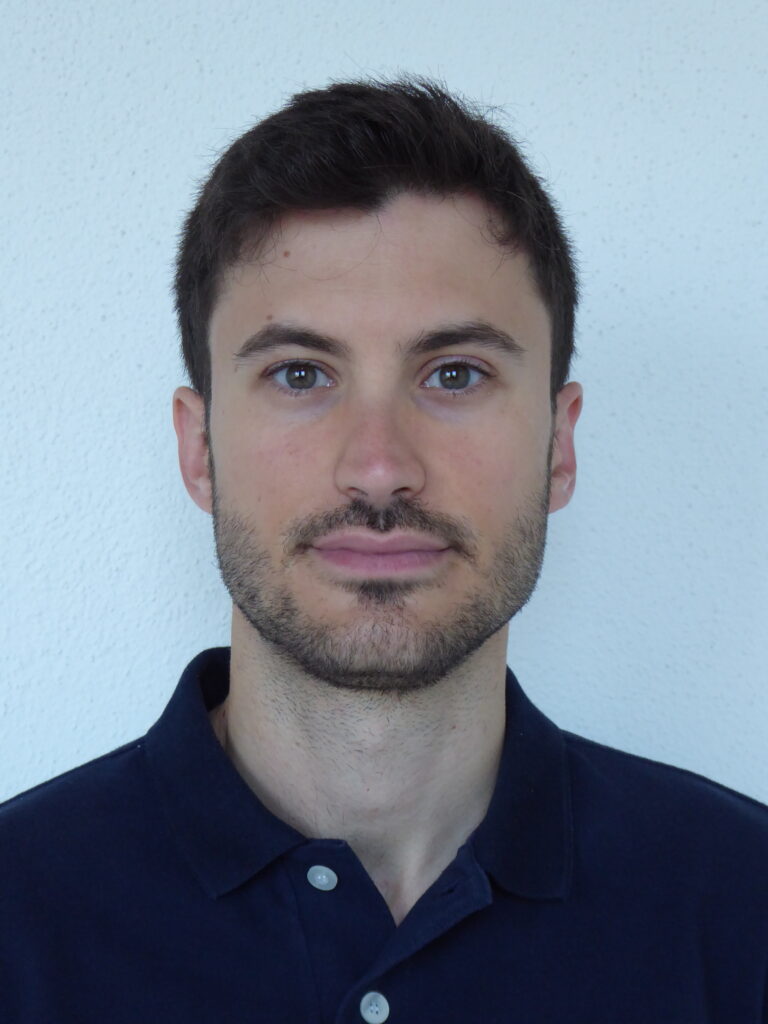
Spain
2021 – present: Postdoctoral Research Scientist, University of Zurich, Switzerland
2016 – 2020: Ph.D. Student, Spanish National Cancer Research Center (CNIO), Spain
2014 – 2015: M.Sc. Molecular Biomedicine, Autonomous University of Madrid, Spain
2009 – 2014: M.Sc. Biochemistry, University of Zaragoza, Spain
Cell cycle and checkpoint maintenance
DNA replication and DNA repair
Role of ubiquitin and SUMO in genome stability
DMMD Retreat in Filzbach above Walensee
September 2021

Julia joins the lab as new PhD student
September 2021
Julia Vornberger – PhD Student (Molecular Life Sciences Program)

Germany
2021 – present: Ph.D. student (Molecular Biology), University of Zurich, Switzerland
2018 – 2021: M.Sc. Molecular and Cellular Biology, University of Heidelberg, Germany
2015 – 2018: B.Sc. Biological Sciences, University of Konstanz, Germany
DNA replication and replication stress response
DNA damage and DNA repair
Cell cycle regulation
Group summer event to the heart of the Alps
July 2021

Biomolecular condensates at sites of DNA damage: More than just a phase
July 2021
A new nomenclature for ADP-ribosyltransferases
July 2021
A new role for the FAN1-MLH1 complex in repeat stability and inter-strand crosslink repair
July 2021
RPA shields inherited DNA lesions for post-mitotic DNA synthesis
June 2021
Dual control of 53BP1-p53 signaling published back-to-back in Molecular Cell
May 2021
Michaela and Aleksandra successfully defend their theses
May 2021
Andreas’ review is published in the April issue of TiBS
April 2021

Brief research article out on single cell data normalization by DNA content
April 2021

New group pictures taken outside on our campus
March 2021

Frontiers Research Topic “Protecting the Code: DNA Double-Strand Break Repair Pathway Choice“ is online
January 2021

Aleksandra’s review is online ahead of print
December 2020

Stefania’s work on the chromatin remodeler CHD7 is published
November 2020

Merula, Kyra and Daniel join the lab
October 2020
Marco’s paper on TRIP12-regulated PARP inhibitor efficiency is out
August 2020

Matteo’s and Federico’s collaborative paper is out
July 2020

Aswini Krishnan joins the lab as UZH resumes adapted on-site operations
June 2020
Aswini Krishnan – Postdoctoral Research Scientist
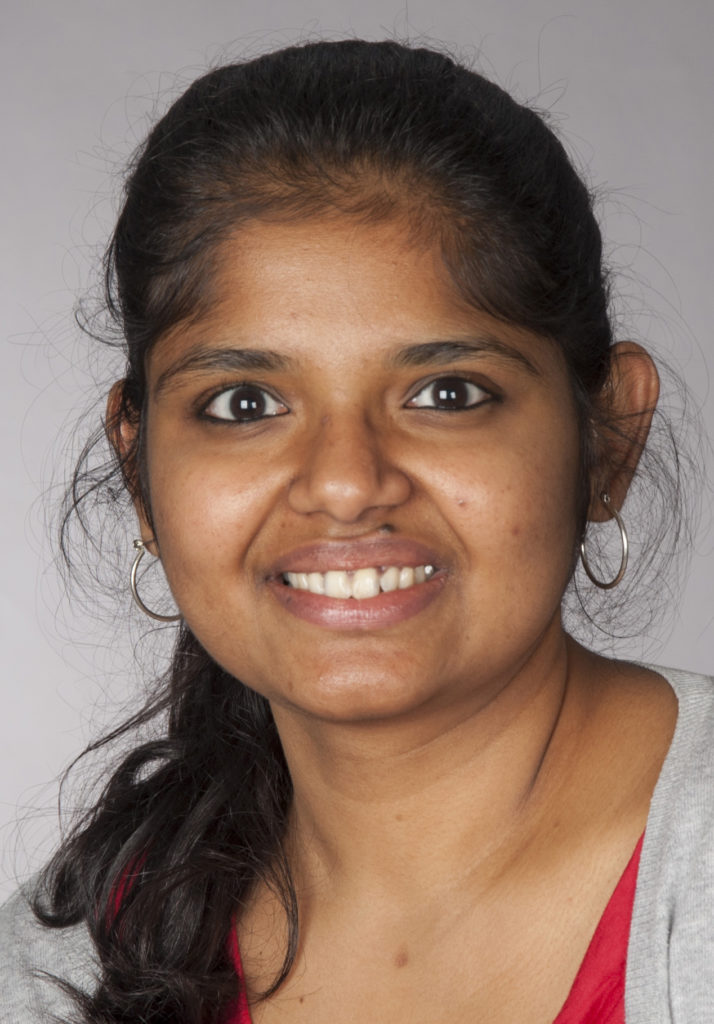
Kerala, India
2020 – present: Postdoctoral Research Scientist, University of Zurich, Switzerland
2014 – 2019: PhD Student, Cell Biology Unit, University Medical Center Johannes Gutenberg- University Mainz, Germany
2012 – 2014: Junior Research Fellow, Institute for Stem Cell Biology and Regenerative Medicine, Bangalore, India
2010 – 2012: Scientific Officer, The Beatson Institute for Cancer Research, Glasgow, United Kingdom
2008 – 2009: Master of Science, Stem Cell and Regenerative Medicine, University of Sheffield, United Kingdom
2005 – 2008: Bachelor of Science, Biotechnology, Chemistry, Botany, Bangalore University, India
Cancer biology
Translational research
Conferences cancelled, new hires delayed due to COVID-19
May 2020
University remains closed in April
April 2020

University lockdown in response to SARS-CoV-2
March 2020

Yanlin Wen joins the lab
February 2020
Yanlin Wen – PhD Student (Molecular Life Sciences Program)

China
2020 – present: Ph.D. student (Molecular Life Science) , University of Zurich, Switzerland
2017 – 2019: M.Sc. Biochemistry, Freie Universität Berlin, Germany
2014 – 2017: B.Sc. Biochemistry, Freie Universität Berlin, Germany
DNA replication
Signaling pathways involved in DNA damage response
Replication-recombination-repair (RRR) meeting
February 2020
Andreas Panagopoulos joins the lab
January 2020
Andreas Panagopoulos – Postdoctoral Research Scientist

Greece
2020 – present: Postdoctoral Research Scientist, University of Zurich, Switzerland
2014 – 2019: Ph.D. student, School of Medicine, University of Patras, Greece
2017: Visiting Ph.D. student, Institute of Molecular Biology (IMB), Mainz, Germany
2012 – 2014: M.Sc. Applications in Basic Medical Sciences, School of Medicine, University of Patras, Greece
2008 – 2012: B.Sc. Department of Biology, University of Patras, Greece
Checkpoint maintenance
DNA replication & DNA repair
Functional imaging
The DMMD rounds off the year
December 2019
Graduate Campus Annual Ceremony
November 2019
First scientific DMMD Retreat
October 2019

Exciting group summer event in Interlaken
September 2019

Jone’s project on CHK1 regulation is published in JCB
August 2019
Phase separation of DNA repair compartments in EMBO Journal
July 2019

Villa Vigoni Meeting in Menaggio
June 2019
PARP 2019 Meeting in Budapest
May 2019
Federico receives prestigious Mercator Award
April 2019
New protocol on Nature Protocol Exchange
March 2019
Article published in current issue of Molecular Cell
February 2019

We are on Twitter
January 2019
Edison joins the lab
January 2019
Edison Carvalho – Postdoctoral Research Scientist

Cap Verde
2019 – present: Postdoctoral Research Scientist, University of Zurich, Switzerland
2014 – 2018: Ph.D. student at Instituto Gulbenkian de Ciência (IGC) and Nova Universisty, Portugal
2010 – 2013: Research Assistant at Center of Marine science (CCMAr), University of Algarve, Portugal
2007 – 2009: M.Sc. Marine Biology at University of Algarve, Portugal
2001 – 2007: B.Sc. Marine Biology at University of Algarve, Portugal
DNA damage and genome instability
Cancer and aging-related diseases
Protein modifications after DNA damage
Stefania successfully defended her PhD thesis
December 2018

Manuscript accepted & PhD successfully defended
November 2018

Vincent joins the lab
October 2018
Vincent Spegg – PhD Student (Molecular Life Sciences Program)
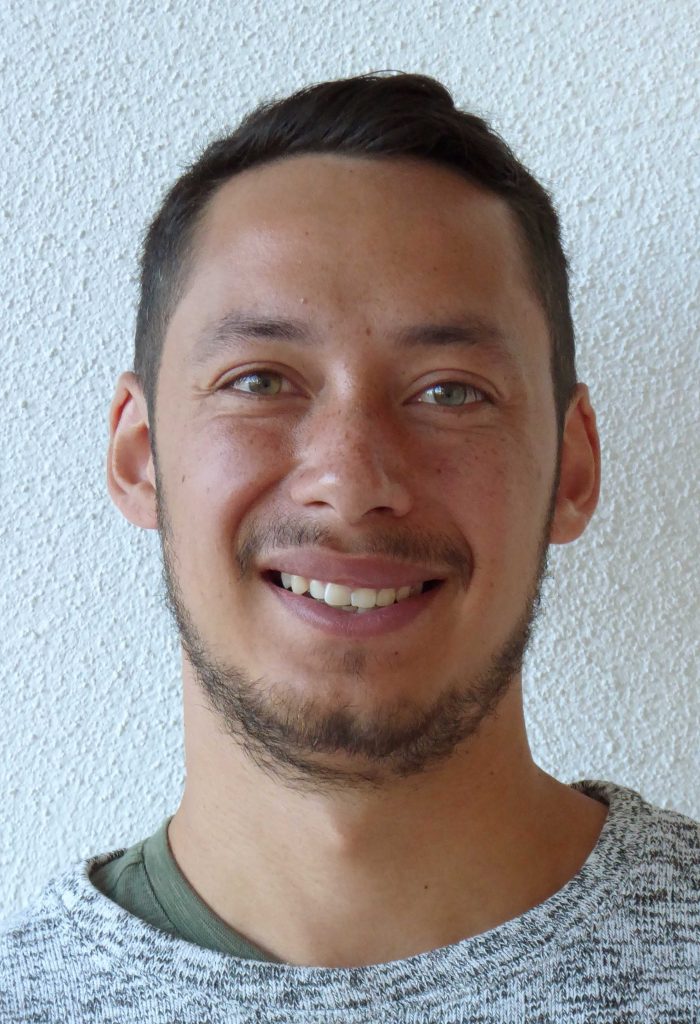
Germany
2018 – present: Ph.D. student (Molecular Biology), University of Zurich, Switzerland
2014 – 2017: M.Sc. (Biology), University of Konstanz, Germany
2011 – 2014: B.Sc. (Biology), University of Konstanz, Germany
Signaling pathways involved in the DNA damage response
Regulation of the cell cycle
In vitro toxicology
Join us at the Science Festival 100 Ways of Thinking
September 2018

Looking back on the DMMD 2018 Summer Games and our group rafting trip
August 2018

Measuring cellular responses to PARP inhibition
July 2018
 Analysis of PARP inhibitor toxicity by multidimensional fluorescence microscopy reveals mechanisms of sensitivity and resistance
Analysis of PARP inhibitor toxicity by multidimensional fluorescence microscopy reveals mechanisms of sensitivity and resistance
Research distinctions for Stefania and Jone
June 2018
Approach of the lab featured in BIOspektrum
May 2018
Editorial on genotoxic stress inheritance
April 2018
Lab research featured in UZH Magazin and in the Annual Report 2017
March 2018

Up to the mountains to reach for the sky
February 2018

Joint Department Colloquium starts off the year
January 2018

News & Views: Daughters sense their mother’s stress
November 2017
Aleksandra’s paper is out
October 2017
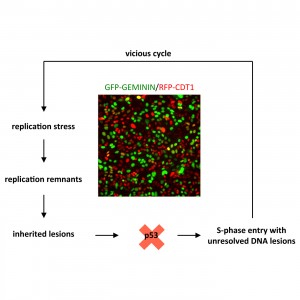
Cell Cycle. 2017 Oct 5:0. doi: 10.1080/15384101.2017.1383578.
Michael joins the lab
October 2017
Michael Hauer – Gebert Rüf Foundation Postdoctoral Research Fellow
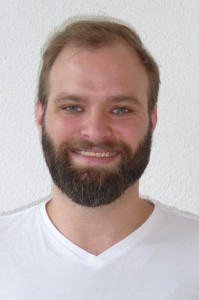
Germany
2017 – present: Postdoctoral Research Scientist, University of Zurich, Switzerland
2013 – 2017: Ph.D. student (Biochemistry), FMI for Biomedical Research, Basel, Switzerland (Boehringer Ingelheim Foundation PhD fellowship)
2011 – 2013: Master’s thesis work at University of California at Berkeley, USA and FMI for Biomedical Research, Basel, Switzerland (DAAD PROMOS fellowship)
2010 – 2013: M.Sc. (Molecular Cell Biology & Immunology) Eberhard Karls University, Tübingen, Germany
2009 – 2010: B.Sc. work at the FML of the Max Planck Society, Tübingen, Germany, the EMBL, Heidelberg, Germany and the IMP, Vienna, Austria
2007 – 2010: B.Sc. (Biology), Eberhard Karls University, Tübingen, Germany
Chromatin biology
Genome editing
The DNA damage response with a focus on homology-driven DNA double-strand break repair
Global changes in chromatin composition upon genotoxic insults
Joint lab retreat at Flumserberg
September 2017

Poster Prize to lab member Federico Teloni
September 2017
Andrew joins the lab
August 2017
Andrew Seeber – SNF BRIDGE Fellow
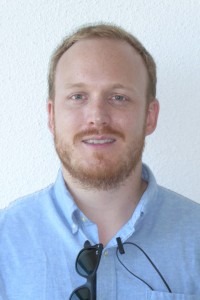
South Africa / Ireland
2017 – present: Postdoctoral Research Scientist, University of Zurich, Switzerland
2011 – 2017: Ph.D. student (Genetics), Friedrich Miescher Institute for Biomedical Research, Basel, Switzerland
2010 – 2011: NCCR Ph.D. program rotations, University of Geneva, Switzerland
2006 – 2010: B.Sc. (Biochemistry), National University of Ireland, Galway, Ireland
Chromatin organization and dynamics
DNA double-strand break repair and the DNA damage response with a focus on the role of chromatin modification in these processes
Genome editing
Article finally out in Methods in Molecular Biology
July 2017
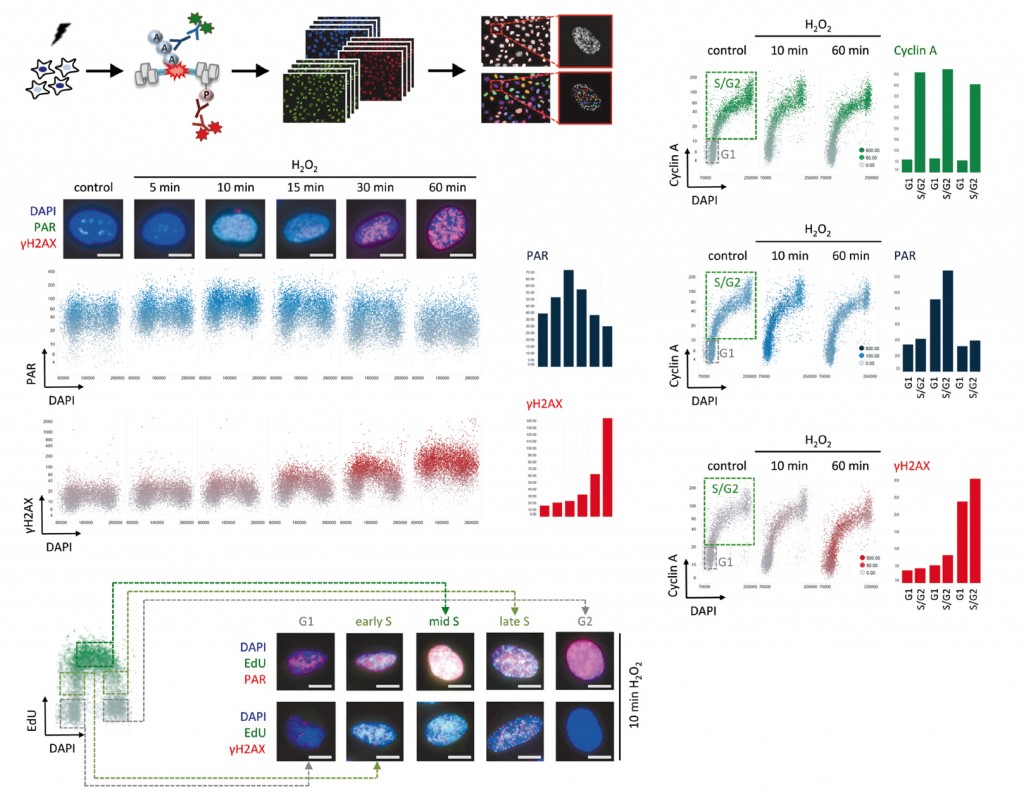
Methods Mol Biol. 2017;1608:57-68.
Methods Mol Biol. Volume 1608 2017. ISBN: 978-1-4939-6992-0 (Print) 978-1-4939-6993-7 (Online)
Worth Repeating: Second Mini-Retreat of the Lab
June 2017

Lab member Jone featured in JoVE
June 2017
Work by Stefania and Jone, Federico and Ralph published in Cell Reports
May 2017
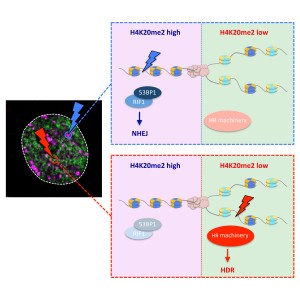
Cell Reports 19, 1819–1831, 2017
Sinan Kilic and Marco Gatti join the lab
May 2017
Sinan Kilic – Postdoctoral Research Scientist

Denmark
2017 – present: Postdoctoral Research Scientist, University of Zurich, Switzerland
2012 – 2017: Ph.D. Institute of Chemistry and Chemical Engineering, École Polytechnique Fédérale de Lausanne, Switzerland
2011 – 2012: Master’s Thesis, Department of Chemistry, Princeton University, USA
2009 – 2012: M.Sc. Pharmaceutical Sciences, Faculty of Pharmaceutical Sciences, University of Copenhagen, Denmark
2006 – 2009: B.Sc. Pharmaceutical Sciences, Faculty of Pharmaceutical Sciences, University of Copenhagen, Denmark
Chromatin dynamics at the single cell and single molecule level
Effectors and post-translational modifications in the DNA damage response
Cellular heterogeneitySinan Kilic – Postdoctoral Research Scientist
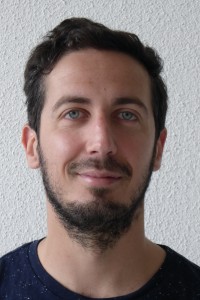
Italy
2017 – present: Postdoctoral Research Scientist, University of Zurich, Switzerland
2013 – 2017: Postdoctoral Research Scientist, Institute of Molecular Cancer Research, University of Zurich, Switzerland, and Department of Pharmaceutical Sciences, Universita’ del Piemonte Orientale, Italy
2014: Triennial Fellowship, FIRC, Fondazione Italiana per la Ricerca sul Cancro
2009 – 2013: PhD student (Pharmaceutical and Food Biotechnology), Department of Pharmaceutical Sciences, Universita’ del Piemonte Orientale, Italy
2009: Doctorate Scholarship, Progetto Lagrange, Fondazione CRT (Torino)
2007 – 2009: M.Sc. (Pharmaceutical and Medical Biotechnology), Universita’ del Piemonte Orientale, Italy
2004 – 2007: B.Sc. (Biotechnology), Universita’ del Piemonte Orientale, Italy
Role of the ubiquitin system in genome stability
Chromatin modifications after DNA damage
Thomas Schmid returns to the lab
April 2017
Joint Department Colloquium and DMMD goes Sledding
February 2017
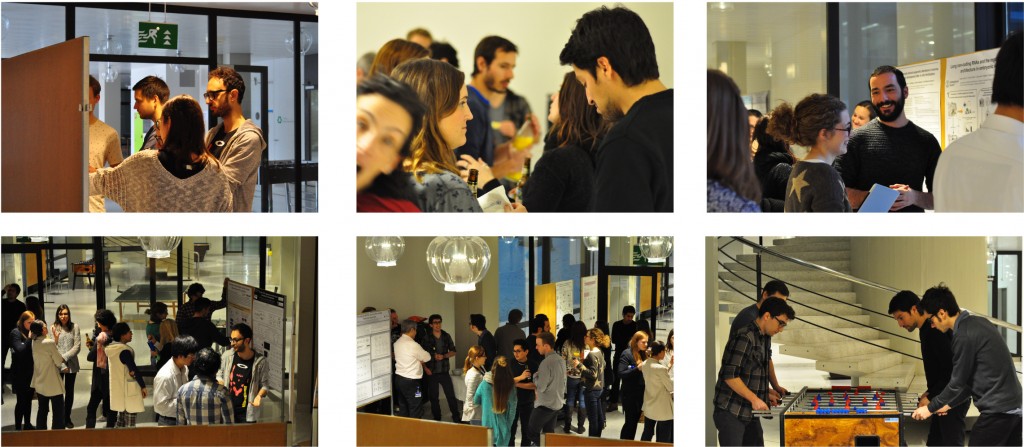
Eliana joins the lab
January 2017
Eliana Bianco – PhD Student (Cancer Biology Program)
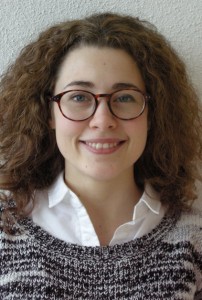
Italy
2017 – present: Ph.D. student (Cancer Biology), University of Zurich, Switzerland
2016: Scholarship for the Promising Young, Laboratory of Genome Instability and Human Pathologies, Department of Bioscience, University of Milan, Italy
2013 – 2015: M.Sc. (Molecular Biotechnology and Bioinformatics), University of Milan, Italy
2010 – 2013: B.Sc. (Biotechnology), University of Milan, Italy
Genome instability
DNA repair and DNA damage checkpoints
DNA replication
Postdoc Fellowship awarded to Jone Michelena
December 2016
Interview in Vetsuisse News
December 2016
Aleksandra joins the lab
November 2016
Aleksandra Lezaja – PhD Student (Cancer Biology Program)

Serbia
2016 – present: Ph.D. student (Cancer Biology), University of Zurich, Switzerland
2014 – 2016: MSc (Biology, Curriculum: Genetics, Development and Evolution), Master Excellence Fellowship, Faculty of Science, University of Geneva, Switzerland
2010 – 2014: BSc (Molecular Biology and Physiology), University of Serbia, Belgrade
DNA replication
Signaling pathways involved in DNA damage repair, cancer genetics, cell cycle progression
ERC grant awarded to the lab (ERC-2016-StG)
September 2016
2016 DMMD Summer Games
July 2016

Additional research support for the lab
July 2016
PhD Fellowship awarded to Federico Teloni
June 2016
Joint lab retreat at Flumserberg
June 2016

Pakize joins the lab
June 2016
Pakize Canturk – Visiting Research Scientist

Turkey
2016 – present: Visiting Research Scientist, University of Zurich, Switzerland
2013 – present: Faculty position, Cumhuriyet University, Sivas, Turkey
2008 – 2012: Ph.D. (Biotechnology), Ege University, Izmir, Turkey
2005 – 2008: M.Sc. (Pharmaceutical Biotechnology), Ege University, Izmir, Turkey
2000 – 2005: B.Sc. (Biology), Ege University, Izmir, Turkey
Roles of DNA topoisomerases in anticancer drug mechanisms and replication stress.
Mini-Review published in Frontiers in Genetics
May 2016
Interplay between Ubiquitin, SUMO, and Poly(ADP-Ribose) in the Cellular Response to Genotoxic Stress

Front. Genet., 19 April 2016 | http://dx.doi.org/10.3389/fgene.2016.00063
Front. Genet., 2016
Review on phase separation out in Trends in Cell Biology
April 2016
Phase separation: linking cellular compartmentalization to disease

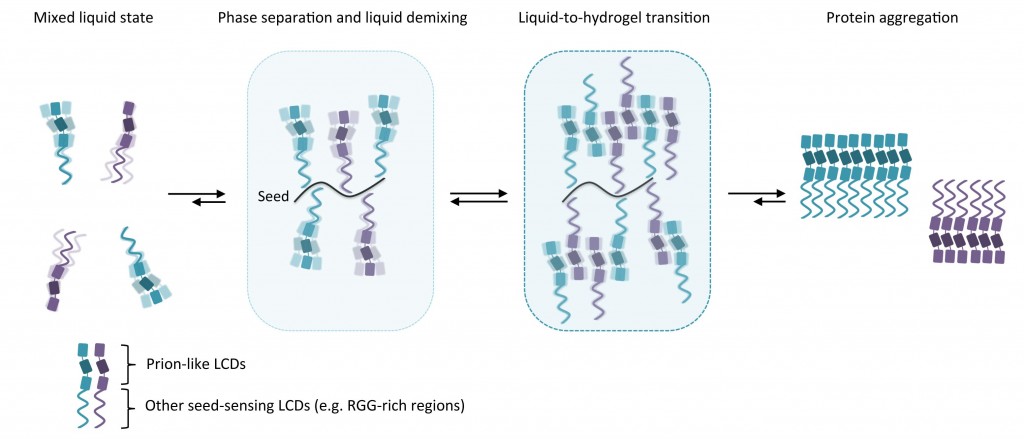
Trends in Cell Biol. 2016 10.1016/j.tcb.2016.03.004
New publications by our lab members Jone and Federico
March/April 2016
When time is too short: How ESCs deal with stress
February 2016
A short G1 phase imposes constitutive replication stress and fork remodelling in mouse embryonic stem cells.
Nat Commun. 2016 Feb 15;7:10660. doi: 10.1038/ncomms10660.
Sledding day in Elm
January 2016

Jone joins the lab
January 2016
Jone Michelena – Postdoctoral Research Scientist
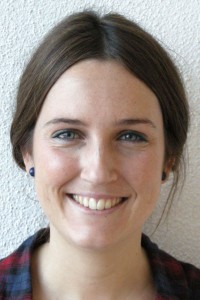
Spain
2016 – present: Postdoctoral Research Scientist, University of Zurich, Switzerland
2014 – 2015: Postdoctoral Research Scientist, University of the Basque Country UPV/EHU, Spain
2009 – 2014: Ph.D. student (Molecular Biology and Biomedicine), University of the Basque Country UPV/EHU, Spain
2008 – 2009: M.Sc. (Molecular Biology and Biomedicine), University of the Basque Country UPV/EHU and University of Cantabria, Spain
2003 – 2008: B.Sc. (Biochemistry), University of the Basque Country UPV/EHU, Spain
Cell cycle, DNA replication and genome stability
Gene expression regulation in response to DNA damage
IVBMB is now Department of Molecular Mechanisms of Disease
January 2016
New review article published
December 2015
Readers of poly(ADP-ribose): designed to be fit for purpose

Nucleic Acids Res. 2016 Feb 18;44(3):993-1006.
First scientific lab retreat
October 2015

New research article accepted for publication
July 2015
Liquid demixing of intrinsically disordered proteins is seeded by poly(ADP-ribose)
 Compartmentalization is key to sub-divide the intracellular environment and orchestrate biochemical reactions in space and time. How compartmentalization is achieved is incompletely understood, in particular when it occurs without membranes as physical barriers.
Compartmentalization is key to sub-divide the intracellular environment and orchestrate biochemical reactions in space and time. How compartmentalization is achieved is incompletely understood, in particular when it occurs without membranes as physical barriers.
Nature Comm. 2015 Aug 19;6:8088
Nat Struct Mol Biol. 2015 Sep;22(9):655.
UZH News
Our group joins the Hottiger and Baubec labs for a kart race
July 2015

Matthias receives research grant from the Research Talent Development Fund
April 2015
Thomas joins the lab
March 2015
Thomas Schmid – Master Student (Vet Med)
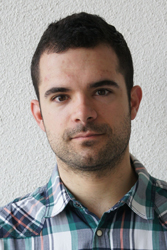
Stefania joins the lab
November 2014
Stefania Pellegrino – PhD Student (MLS)

Italy
2014 – present: Ph.D. student (Molecular Biology), University of Zurich, Switzerland
2014: Leonardo Da Vinci scholarship, Laboratory of Genetic Instability and Nuclear Organization, CEA, Fontenay-aux-roses, France
2013 – 2014: Master of II level in “Molecular diagnostics and Translational Biomedicine”, University of Catania, Italy
2010 – 2012: MSc (Cellular and Molecular Biology), University of Catania, Italy
2005 – 2010: BSc (Biology), University of Catania, Italy
Genome instability and DNA repair in cancer
Microscopy
Federico joins the lab
October 2014
Federico Teloni – PhD Student (MLS)

Italy
2014 – present: Ph.D. student (Molecular Biology), University of Zurich, Switzerland
2013 – 2014: Scholarship for Abroad Training, University of Michigan, United States of America
2010 – 2013: MSc (Biology, Curriculum: Molecular Diagnostics and Biotechnology), University of Camerino, Italy
2006 – 2010: BSc (Biotechnology), University of Camerino, Italy
Genome instability and DNA repair in cancer
Microscopy techniques
Cell biology
Ralph joins the lab
October 2014
Ralph Imhof – Research Technician

Switzerland
2007 – present: Lab Technician mbA, IT-Management & Support, Financial Controlling, University of Zurich, Switzerland
2005 – 2007: Lab Manager & new Lab Establishment, Donnelly Centre for Cellular & Biomolecular Research, University of Toronto, Dept. of Biochemistry & Dept. of Molecular Genetics, Canada
1998 – 2005: Lab Technician, IT-Management & Support, Institute for Veterinary Biochemistry and Molecular Biology, University of Zurich, Switzerland
Protein Purification & Protein Interaction Methodologies
Molecular Biology
Analytical & preparative HPLC
Matthias joins the University of Zurich
October 2014
Matthias Altmeyer – Research Group Leader

Germany
2014 – present: SNF Professor, Principal Investigator, University of Zurich, Switzerland
2012 – 2014: Postdoctoral Research Scientist, Novo Nordisk Foundation Center for Protein Research, Copenhagen, Denmark
2010 – 2012: Postdoctoral Research Scientist, Danish Cancer Society, Copenhagen, Denmark
2007 – 2010: Ph.D. Candidate (Molecular Biology), University of Zurich, Switzerland
2001 – 2006: Diploma Candidate (Biology), University of Konstanz, Germany
Genome instability in cancer and aging
Chromatin modifications in response to DNA damage
Cancer-specific alterations in the cellular DNA repair network and their therapeutic potential
Matthias receives SNF Professorship
February 2014

